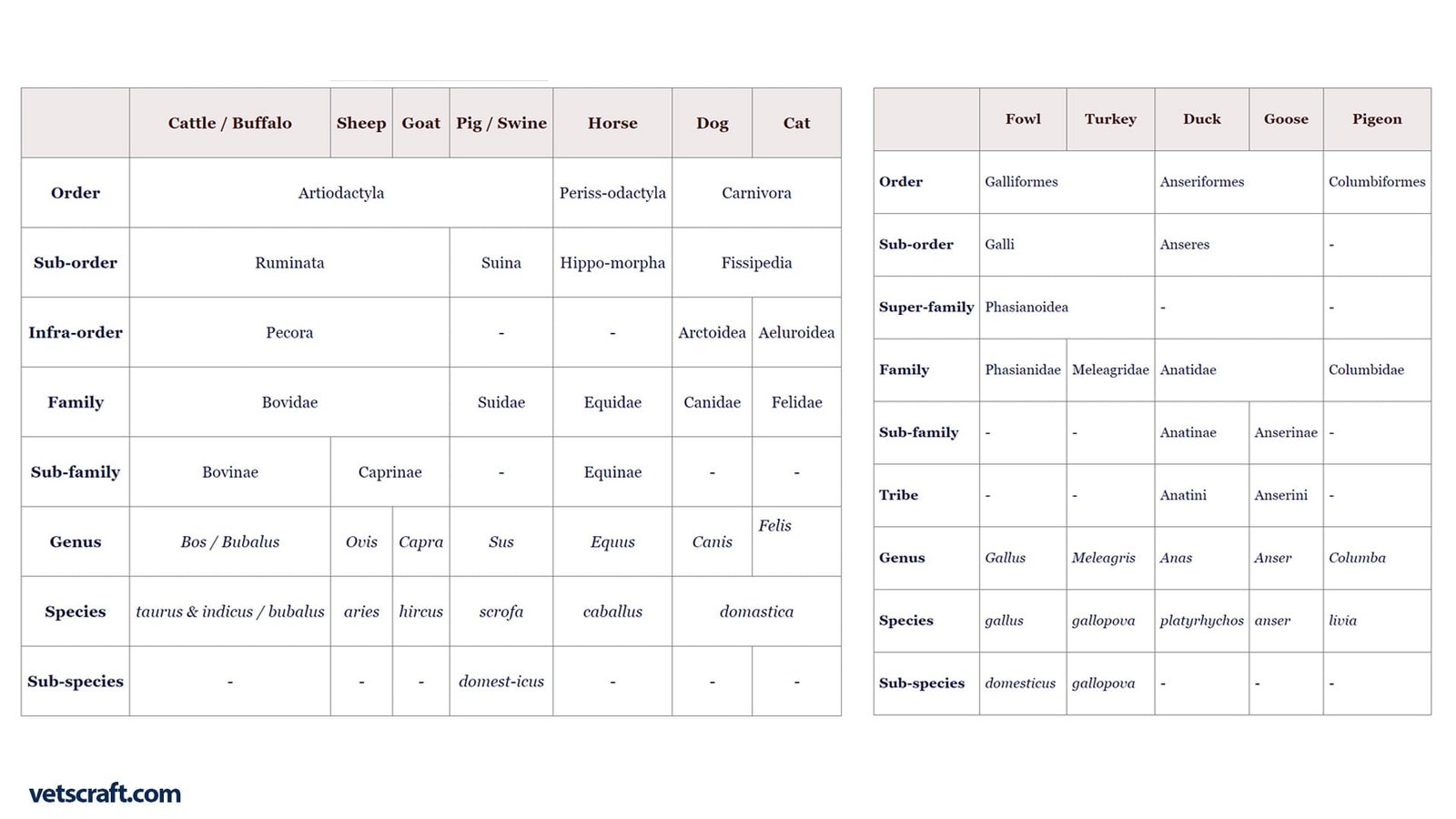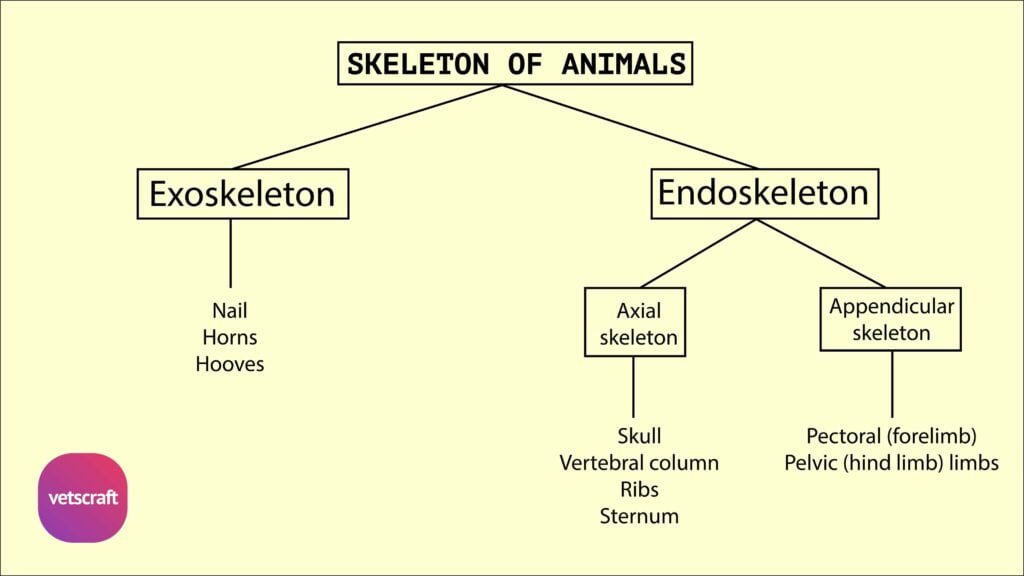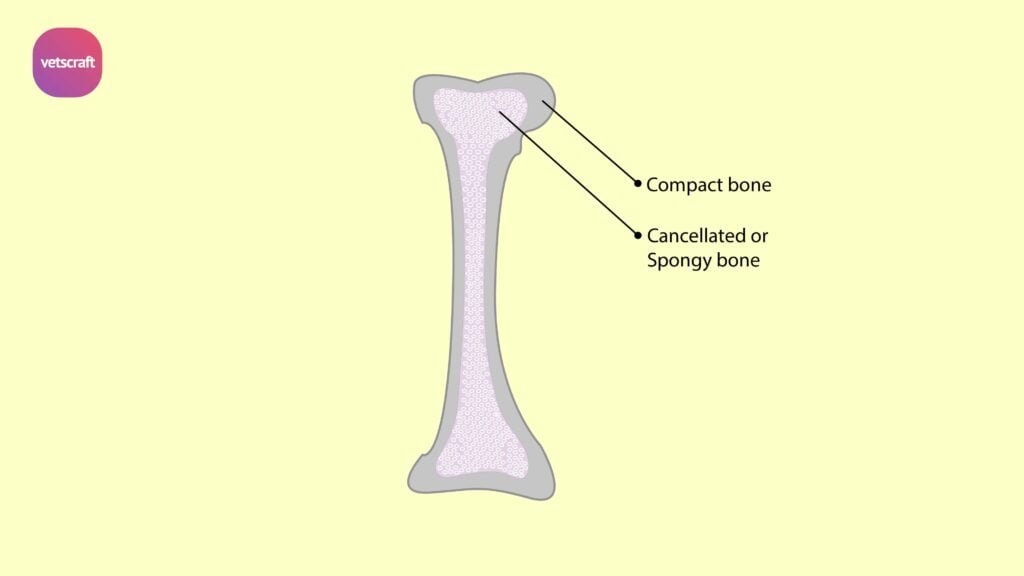TABLE OF CONTENTS
Basics of Veterinary Anatomy: Branches, Directional Terms, and Anatomical Planes
The basics of veterinary anatomy cover the essential understanding of how different body parts—such as bones, muscles, organs, and tissues—are arranged and interconnected to maintain the life and health of an animal.
Anatomy is the branch of biological science, which deals with the form and structure of the body and its parts. The various parts of the body must work together in near-perfect harmony to maintain the life and well-being of an animal. The term anatomy strictly means cutting open or dissociating the parts of the body.
Branches of Anatomy
1. Gross anatomy / Macroscopic anatomy
Gross anatomy is the study of anatomy at the visible or macroscopic level.
2. Topographical / Regional Anatomy
All the structures, present in the each regions or parts of the body are studied in the order, in which they should present themselves, in the course of dissection. For example, the anatomy of the neck region would include all the muscles, bones, organs, blood vessels and nerves present in the neck.
3. Systematic Anatomy
The branch of anatomy deals with the different systems in the animal body are studied one after another. E.g. Skeletal system, muscular system etc.
- Osteology– study of Bones
- Arthrology – study of Joints
- Myology – study of Muscles
- Splanchnology – study of Visceral organs
- Angiology – study of Cardio-vascular system
- Neurology – study of Nervous system
- Aesthesiology study of Sense organs
- Histology and Cytology / Microscopic Anatomy – the study of the microscopic structure of tissues
- Developmental Anatomy / Embryology – study of embryos and their development.
Directional Terms
Certain directional terms are used in anatomy for description of the various organs or parts of the body with regard to their position, direction etc. It is assumed that the animal is in the ordinary standing position.
Cranial and caudal refers to the ends of the animal as it stands on four legs. Cranial, cephalic or anterior means direction towards the head. Caudal or posterior means direction towards the tail.
Rostral is a special term used only to describe positions or directions on the head especially towards the tip of the nose.
Dorsal and ventral refer to “up and down” directions with the animal in a standing position.
Dorsal or superior means towards the back (top surface) of a standing animal and ventral or inferior means towards the belly (bottom) of a standing animal.

Medial and lateral refers to positions relative to the median plane. Medial means towards the median plane (toward the center line of the body) and lateral means away from the median plane.
Deep and superficial refer to the position of the body parts relative to the center or surface of the body. Deep means towards the center of the body or body part. (Internal is sometimes used in place of deep). Superficial means towards the surface of the body. (External is sometimes used in place of superficial).
Proximal and distal are used to describe positions only on extremities, such as leg, ear and tail, relative to the body. Proximal means towards the body and distal means away from the body.
With respect to distal parts of limbs, the anterior and posterior faces are referred as dorsal and volar respectively in the case of the pectoral limb and dorsal and plantar in the pelvic limb. The medial and lateral aspects are referred as radial and ulnar respectively in the case of the pectoral limb and tibial and fibular in the pelvic limb. The terms axial and abaxial are used to denote the structures lying towards or away from the central axis of the limb.
Specific terms in Animals
- Anterior/Cranial/Rostral: The head end of the body.
- Posterior/Caudal: The tail end of the body.
- Proximal: Upper or superior
- Distal: Lower or inferior
- Superior: It is equivalent to upper or higher i.e. above.
- Inferior: It is equivalent to lower or under i.e. Below.
- Volar: The posterior face of the distal part of the fore limb.
- Palmar: The surface of the fore limb that contacts the ground in standing condition.
- Plantar: The contact surface of the hind limb in standing condition.
- Axial: Towards the central line of the body or any body part.
- Abaxial: Away from the axis.
- Oral: The structure towards the head.
- Aboral: The structure away from the head.
- Central: A part nearest the middle.
- Peripheral: A part nearest the surface.
- Parietal: The body wall or the wall of the cavity.
- Visceral: The viscera or organ in the cavity.
- Somatic: The part of the body other than viscera.
Anatomical Planes
There are three anatomical planes of reference. Each plane is an imaginary “slice” through the body.
- Median or sagittal plane: A plane that runs down the centre of the body lengthwise and divides it into equal left and right halves. It is also known as midsagittal plane. Plane parallel to the sagittal plane but not on the median line is called Parasagittal plane.
- Transverse plane: A plane across the body that divides it into cranial (head-end) and caudal (tail-end), those are not necessarily equal.
- Dorsal or Horizontal plane: A plane at right angles to the sagittal and transverse planes. It divides the body into dorsal and ventral parts that are not necessarily equal
Zoological Classification of Domestic Animals

Taxonomic Positions of Domestic Animals


